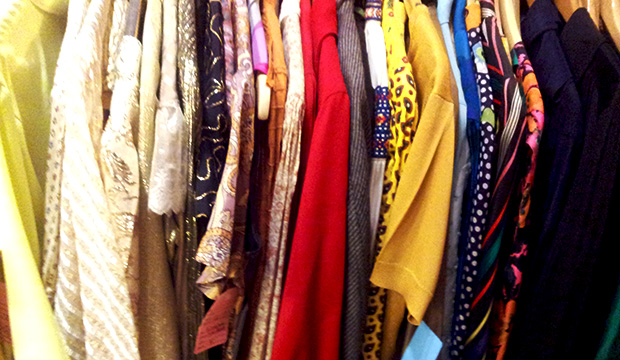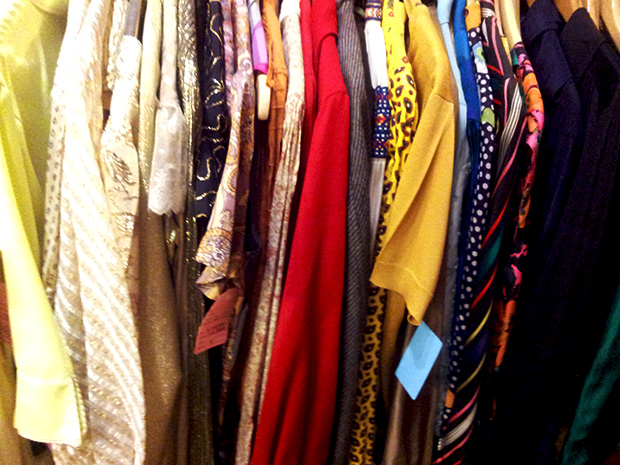
As a fashion designer, getting people interested enough in your label enough to buy pieces from it, is hard. The need to stand out from the crowd of other designers, whether old pros or new kids on the block, is more important than ever. A big part of the reason being the onset of social media and it’s ability to crowd and oversaturate the minds of the consumer.
So many choices, so little budget.
In an attempt to reach as many consumers as possible, most designers sell their collections in boutiques as well as online.
There has been some talk about selling online vs brick and mortar sales; so much shopping happens on the computer, the tablet, and the mobile phone, that some designers are actually seizing the brick and mortar placement efforts and selling solely via their websites.
There are pros and cons to both avenues of distribution.
Benefits of selling your products online:
- Reach. Obviously, the amount of people you can reach online is far more impressive than the amount walking into a brick and mortar of an particular day.
- Great website experience. You have the opportunity to create a beautifully branded website bringing all the customer service that the store would bring onto your very platform.
- Relationships. You have the opportunity to create stronger relationships with your customers since you are workign dorectly with them, rather than through a third party.
Benefits of selling your products in brick and mortar stores:
- Hands On. Sometimes, when a customer can get their hands on your products in a store, it makes the sale. The ability to touch the soft fabric or get a close up on the metallic stitching can be the final push to make the purchase. This is not somethign that can be accomplished online.
- Dressing rooms. Regardless of the amount of clever tech fashion apps that are popping up out there, the ability to physically try on garments and understand their fit is something that brick and mortar stores will always have a leg up on.
- Social. Yes, yes, I know. Social shopping online is all the rage. The thing is, it doesn’t matter how many cool social discovery platforms are created that allow me to share share my purchase or possible purchase with all my friends on Facebook. When it comes to shopping, there will never be anything as social as strolling the boutiques with my sisters, my mom, my best friends, getting lunch, and giving opinions of “too tight”, “makes your behind disappear”, “It’s perfect!”. This is real social shopping.
While both avenues have advantages and therefore disadvantages, the answer to the designer’s dilemma of online vs. offline is both.
Always remember that each offers different experiences for the shopper and, as a designer, it’s your job to make sure that your customer has options and should be able to buy in any way he/she wants to. Be there, don’t make them come looking for you.


Blackwell Hall
Being in the apparel industry over the last decade its interesting to see the changes.
The BIGGEST problem with selling wholesale to online vendors is the typical lack of purchase orders. This means holding inventory and it is hard to fund. We have been providing finance for this strategy and I only see it growing.
Great article!
Kajal
This was a really useful post. I started off with wholesale but for branding purposes I needed to create and online channel. I think using affiliate shopping sites like the Fancy and Svypply to divert traffic to my own site will be key. I have paid a lot of attention to photography – it has to be stunning – advice from many many successful online fashion entrepreneurs. I won’t go the brick and mortar route unless its short term. Unless you have a reasonably stable revenue investing in those overheads dont make sense.
sheila odessey
I think this depends on the product. I make unique, eco-friendly handbags woven with recycled plastic bags. I have found they sell best when people can actually see them and hold them. They are thrilled when they find out that the beautiful bag they are considering buying is made from Home Depot or supermarket bags. No matter how good the photos are on my website, it doesn’t translate as well and looses some of the WOW factor. I also have found successful selling thru the website takes alot of time and attention to social media which is a full time job itself.
Anthony Lilore
Balance!
Nicole Giordano
Exactly!
Nicole Giordano
The more I think about it, the more i realize how it truly is a balance. Creating product to sell on multiple platforms and constantly thinking about how to make each offering special.
A challenge for sure!
Ranui Young
Balance is key, the difficult thing for small labels to sell online is to drive traffic to their own online store, consumers need to know your brand before going direct to your store, so you need to build an online customer base through social media and bloggers etc etc.
Brick and Mortar accounts are crucial to small fashion labels. Because they normally have very loyal customers or have good foot traffic that may buy your product (If its good and priced appropriately).
Selling to Online Stockists, they can be good too, but again online shopper are generally more price conscious, unless your product is unique or stands out, or its strong brand, online consumers can immediately compare prices and go for the cheaper item.
So really it doesn’t matter where you sell online or bricks and mortar, its still about the product and pr.
As a fashion label, you need sell to both online stockists and bricks and mortar stockists.
There is a downside the online space for small to medium fashion brands, huge online stockists are stocking everything, more and more consumers are shopping in these places, this leaves other stockists with no customers, this kills off both bricks and mortar stockists and smaller online stockists. Just like a Walmart moving into a town and everyone else goes out of business. This means that the small label that might have had100 stockists, will maybe have 50 stockists, because of a big gigantic online fashion store where you can buy everything.
Ariana Boussard-Reifel
Having recently launched a e-comm site (www.modemarteau.com) I can say it is a wonderful medium. But different items sell successfully than in a brick and mortar.
It seems obvious but the quality of the photographs often trumps the quality of the clothes. I sell fairly exquisite designer clothing, but if it doesn’t read well on camera it is hard to move.
In brick and mortar a delicate gold chain, or a black cashmere sweater would translate well because a customer could have a multi-sensory experience with them, but in images online, bolder, more colorful products are the once that fly off the digital shelf.
Nicole Giordano
Great points, Ariana! Thanks for sharing.
KD
I agree. I’m currently building my web site with e-commerce and by the time I make it to trade next year, I will gauge the feedback from the buyers.
I love your two cents it’s worth far more. 🙂
Nicole Giordano
🙂
Blushing.
KD
Well, it’s frowned upon if you offer the same products online, they don’t want to compete with you which I completely understand. As a small designer I feel I need to be as flexible as possible so I decided to separate my line into different selling segments. Trade will be limited to a certain percentage and online to my upcycled and limited edition pieces.
Nicole Giordano
Interesting point of view.
While it used to be frowned upon by retailers to sell online and to brick and mortar, good retailers now understand that it’s unreasonable to ask/require that is not be done. The thing to remember is that the shopping experience on your website will be different from that of the boutique consumer. As long as your pricing is consistent, it’s always a good thing to be developing your business in both arenas.
With that said, you are so on-point with the limited addition/specialty pieces. It’s a great way to do something special, whether on your site or in the boutiques!
That was just my 2 cents. 🙂
KD
I’ll be starting out primarily online between now and the start of spring, then targeting boutiques and hotels to do direct selling. For later on next year, I’ll be starting my trade schedule and pulling back from selling online. 🙂
Nicole Giordano
Thanks for your feedback, K.D. I’m curious, what makes you want to pull back from online when you start trade shows?